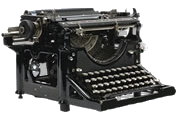The Feminist Rebellion of the Twenties (The Dilineator, 1921)
It was estimated that there were as many as two million empty seats around the collective family dinner tables in Post World War One Britain. Such an absence of young men could not help but lead to a new social arrangement:
England is the great human laboratory of our generation – England with her surplus of two million women, her restless, well-equipped, unsatisfied women.
Too many European women were unable to find husbands and moved to America.
The Feminist Rebellion of the Twenties (The Dilineator, 1921) Read More »
